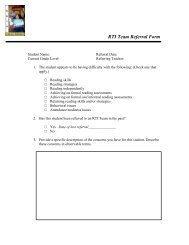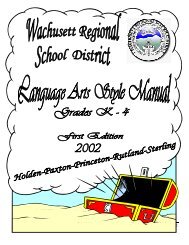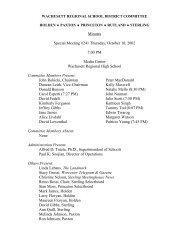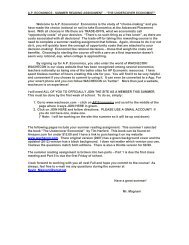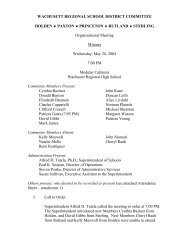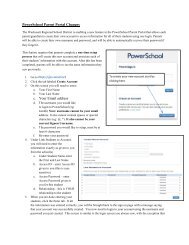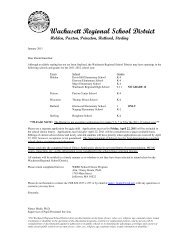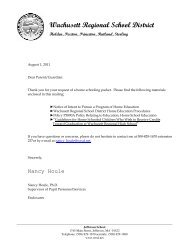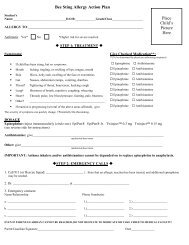(MCAS) ELA Grade 4
(MCAS) ELA Grade 4
(MCAS) ELA Grade 4
You also want an ePaper? Increase the reach of your titles
YUMPU automatically turns print PDFs into web optimized ePapers that Google loves.
English Language Arts<br />
aaSession 3, Reading Selection #1a2<br />
You have seen birds use their wings to fly. Do you know what else they use<br />
Read the article below. Use information from the article to answer the questions that follow.<br />
Feet for Flight<br />
by Michael L. May<br />
1<br />
Birds fly with their wings, right But did you know that many birds also use their feet to fly<br />
Some birds need them for takeoffs and landings. Other birds use their feet to control flight speed<br />
or body temperature.<br />
2<br />
In order for the American coot to get off the ground, it must make a running start across the<br />
water. Other birds, such as the mallard duck, can jump right out of the water and into flight. But<br />
coots are too heavy and need to build up speed. Like an airplane rolling down the runway, a coot<br />
runs across the surface of the water until it reaches flight speed, then lifts off and flaps away.<br />
3<br />
Being airborne doesn’t mean that the footwork is over. Some birds use their feet to slow down<br />
in flight. Now, it might seem that a bird could just stop flapping its wings and reduce speed. But<br />
it’s not that simple. If you stop pedaling your bicycle when you’re going downhill, you’ll<br />
eventually slow down when you reach the bottom. But you still need brakes. Without brakes,<br />
flying birds and speeding bicycles can’t stop fast enough.<br />
4<br />
One bird that uses its feet as air brakes is<br />
the graylag goose. When this bird comes in<br />
for a landing, it dangles its feet like small<br />
parachutes. The rushing air pushes against the<br />
broad, webbed feet and slows the goose down,<br />
allowing it to make a smooth landing in the<br />
water.<br />
5<br />
For some birds, even air brakes are not<br />
enough. Mute swans extend their webbed feet<br />
forward when landing. When their feet hit the<br />
water, the swans ski across the surface until<br />
they gradually slow and plop safely into the<br />
pond or lake.<br />
6<br />
Flying is a tough business that requires<br />
lots of energy. Because birds work hard when<br />
they fly, they get hot. And if they can’t cool<br />
down, they overheat like a car on a hot<br />
summer day. During flight, hot blood flows<br />
to the bird’s body, much as a radiator cools a car engine. Pigeons can release over half of their extra<br />
heat through their feet. Herring gulls rely on their feet to remove 80 percent of the heat generated by<br />
flight.<br />
7<br />
So bird flight is more than just feathers and wings. It’s feet, too. Whether taking off or landing,<br />
reducing speed or body temperature, birds depend on their feet for flight.<br />
© Michael L. May<br />
THE MASSACHUSETTS COMPREHENSIVE ASSESSMENT SYSTEM: 18<br />
Release of Spring 2000, 2001 & 2002 Test Items<br />
Rev. 06/03 srm




